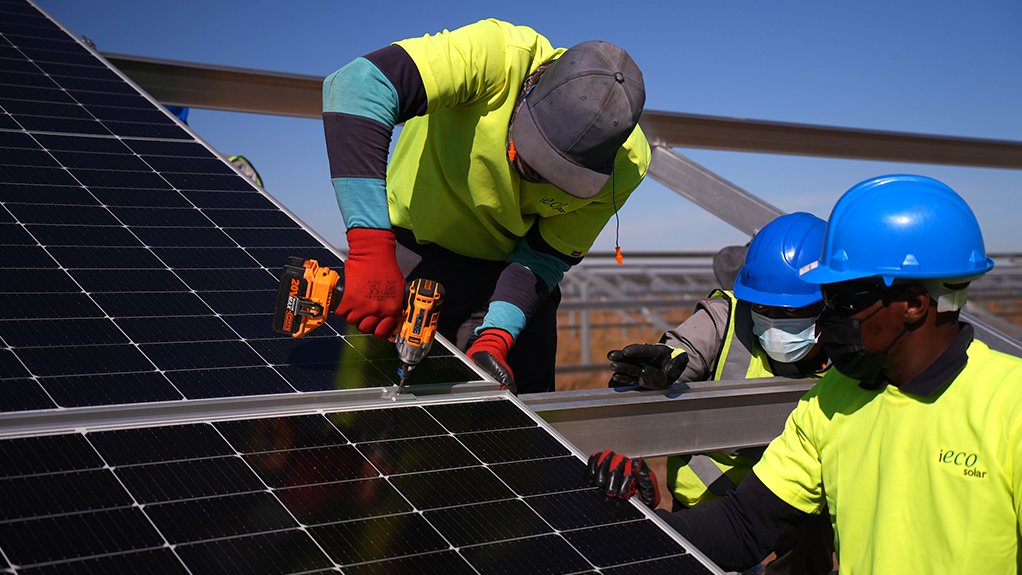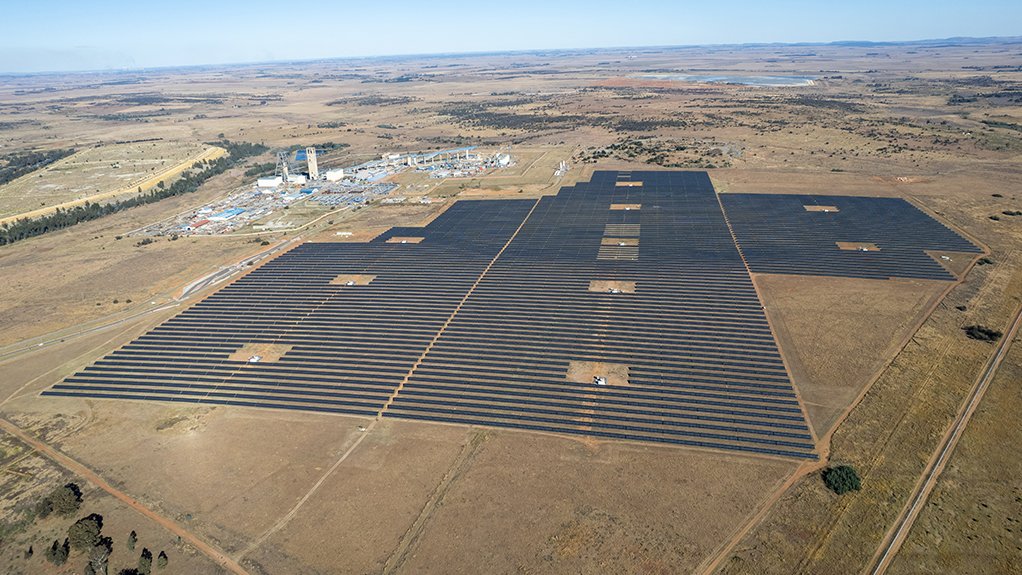Gold producer Gold Fields plans to increase its embedded electricity generation capacity through wind energy at its South Deep operation in Gauteng.
Further, the company is in talks with State-owned power utility Eskom to feed surplus electricity into the grid, says Gold Fields executive VP Benford Mokoatle.
The company is looking to develop an “optimum energy mix” and while the mine could expand the capacity of its Khanyisa solar plant to 60 MW, doing so may not provide the best value for the business, as there are limitations to solar power, Mokoatle acknowledges.
Therefore, Gold Fields is evaluating the viability of integrating wind energy into the system. It bought and erected a meteorological weather mast last year to collect data on the viability of pursing wind energy in the area which, thus far, suggests that wind energy is viable.
“We are likely to build a number of turbines that could each generate between about 3.5 MW to 8.5 MW of power in the evening and to incorporate storage. During the day, reliance will be on the combination of solar and wind,” he explains.
The business is also evaluating battery storage to store surplus energy to be used as and when needed.
Mokoatle emphasises that another Gold Fields priority is to secure a fair net billing agreement with Eskom, whereby excess power can be fed into the grid for Eskom’s use while Gold Fields can, reciprocally, access additional electricity from the grid when required.
Gold Fields and Eskom started the engagement to formalise this process last year and Mokoatle believes that a “solution is imminent”.
Eskom has appointed a project manager for tthe process is, technical visits and assessments have been conducted and the process is with the transmission and distribution technical committees.
Mokoatle notes that while the process is going slower than expected, “it has to be done right. Gold Fields respects Eskom’s processes”.
Further, the recent announcement of the unbundling of Eskom into three units, generation, transmission and distribution, caused a delay.
Gold Fields’ application is with the transmission technical team and Mokoatle looks forward to receiving feedback within the next two to three weeks.
If Eskom and Gold Fields do not come to an agreement, the company will evaluate alternatives to use its surplus energy. These include installing statcoms, capacitors or batteries to store surplus energy that can then be used in other areas of the mine at times when solar power cannot be generated.
However, he notes that these options are quite expensive.
“The levelised cost of battery storage is much higher than the levelised cost of generating the power from solar, wind or the combination of the two.”
South Deep Khanyisa Solar Plant
The R750-million solar plant is fully operational and has been generating electricity for the mine since September 2022.
The solar farm covers an area of 105 ha (roughly 200 soccer fields) and just over 118 000 solar panels feed power into the South Deep side of Eskom incomers and into feeders which feed power to various areas across the mine on surface and underground.
During the licensing process, Gold Fields received support from the regulatory authority – the National Energy Regulator of South Africa, Eskom and government, which helped expedite the licensing process.
The licence was issued in February 2021, six months prior to changes in the electricity regulation which lifted the self-generating threshold to 100 MW. Initially, South Deep’s application was for a 40 MW plant, but that was subsequently upgraded to 50 MW.
Mokoatle notes that if the company had not received support from the regulators, and without the change of the embedded generation threshold in the regulations, the licensing process could have lasted significantly longer, resulting in increased construction costs.
The Khanyisa plant has already led to significant improvements for the mine, providing greater stability to the operation and reduced costs owing to the reduced reliance on the electricity grid. Further, the plant has significantly reduced the mine’s reliance on diesel-generated back-up power, thereby decreasing expenses on diesel.
It has also significantly contributed towards reducing the mine’s carbon footprint and improved its overall environmental impact.
Mokoatle adds that the mine has spent R2-million on diesel in 2023 to date – a significant reduction, compared with last year, when the mine required 160 000 ℓ of diesel in quarter four of 2022 alone, costing almost R3.8-million.
He says the South Deep operation is continuously optimising its energy use to ensure efficiency and sustainability and is far more aware of increased energy efficiencies owing to the scarcity of these resources.
“You need to preserve that which you have,” Mokoatle concludes.
Edited by: Nadine James
Features Deputy Editor
EMAIL THIS ARTICLE SAVE THIS ARTICLE
ARTICLE ENQUIRY
To subscribe email subscriptions@creamermedia.co.za or click here
To advertise email advertising@creamermedia.co.za or click here















